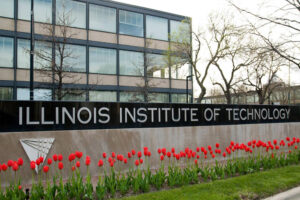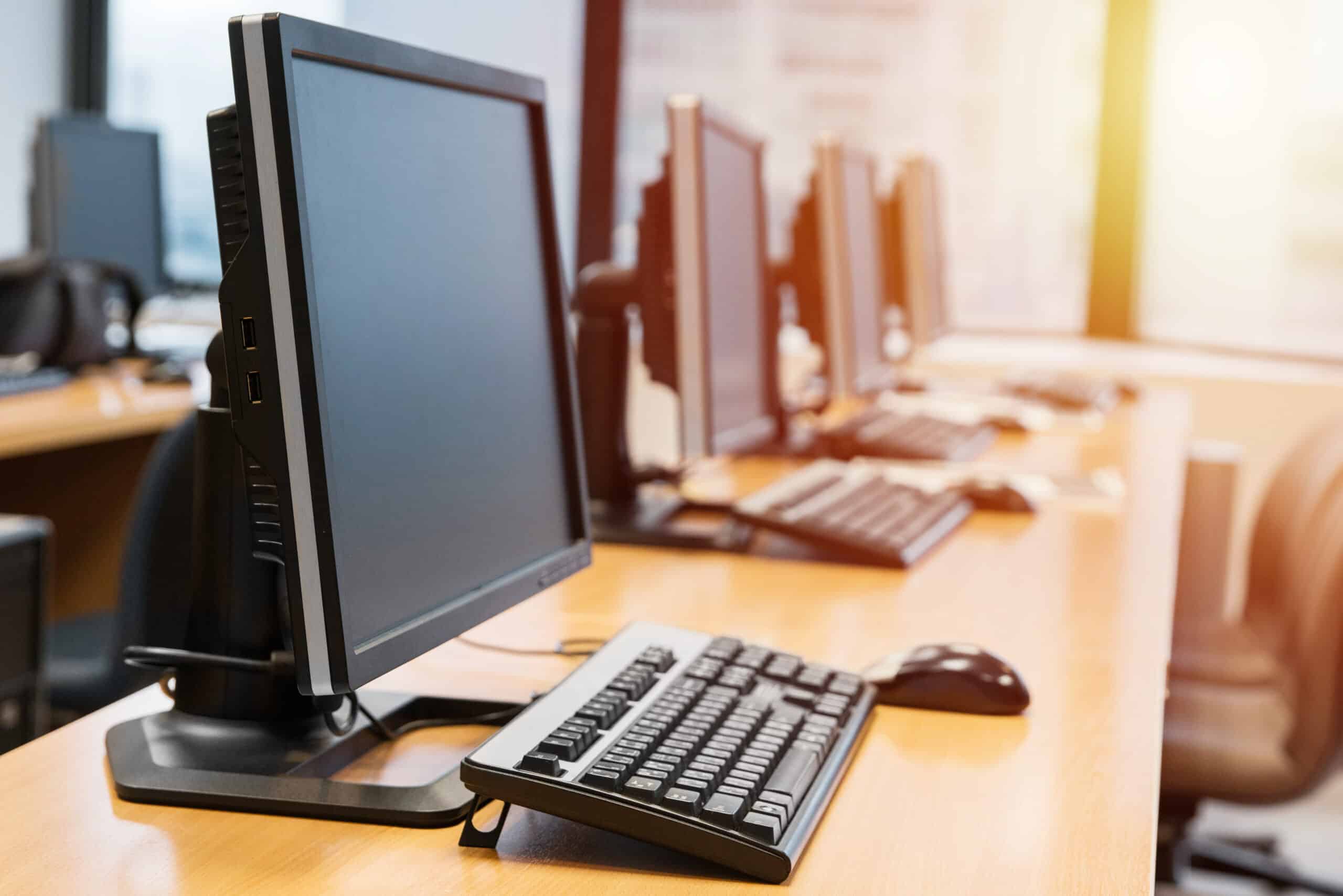The role of IT is a complex one and often involves overseeing many different parts of an institution’s operations, including developing a campus computing strategy. While determining which technology solution is a good fit seems relatively simple, the complexity of the task soon reveals itself once the sheer number of approaches and solutions available becomes apparent.
One solution that has been a mainstay in the higher education ecosystem for decades is the physical computer lab. Throughout this blog, we’ll examine the obvious and not-so-obvious costs of computer lab ownership and demonstrate how to accurately calculate the TCO of physical computer labs using a simple formula.
Initial Investment
Most campus computing solutions start with an up-front investment. For some solutions this is hardware, for others, it’s software or licensing, and sometimes it’s all three.
For campus labs, there is the physical hardware purchase of computers, monitors, keyboards, and mice (we’ll assume furniture and networking equipment is already in place). Depending on the intended use of the machines, there may be a range of costs based on the individual specifications required. Talking with schools across the country, we’ve determined the average package per computer will cost $1,500.00.
On the surface, one could assume the investment figure would then come down to a simple formula of cost multiplied by the number of machines needed. However, there’s a lot more to consider:
- Cost and timing of a hardware refresh cycle: New technologies roll out at a rapid rate, making the shelf life of a computer extremely short. Determine how often and at what percentage your institution will replace (refresh) the computers found across campus. The majority of schools typically aim for 20%-25% of their fleet every year. This can represent a sizable line item in any IT’s budget.
- Computer management costs: Are you using a tool from Microsoft, such as Intune, where your existing campus agreement already entitles you to licenses? Or are you investing in an alternative product such as KACE, where an additional investment of about $2.50 per device will be needed?
- Personnel costs: Does your IT department have the headcount required to take on the management tasks associated with offering physical computer labs across campus?
The cost of offering and maintaining physical computer labs goes far beyond just the initial purchase of the computers, however. Let’s take a look at the obvious and not-so-obvious costs that follow the initial investment phase.
Ongoing Costs
After the initial investment has been made, IT needs to weigh the ongoing costs of updating and maintaining the lab spaces, and as noted before, refreshing the associated hardware on a regular basis. What licensing costs need to be renewed each year? Are there any certification courses and exams your IT staff will need to complete annually? What about the average break/fix budget for the physical hardware assets?
Soft Costs
One of the most frequent mistakes IT leaders make when considering a new solution is underestimating the cost of human capital to manage and maintain the new solution. However, this is easy to incorporate and should be part of any TCO calculation.
For the solution of physical computer labs, there are three primary areas of human cost to review and estimate:
- The time it takes to create the gold image that will be used to clone the rest of the computers across campus.
- The time and effort required to swap hardware components during the annual refresh cycle.
- The time needed to diagnose and effect repairs of failed equipment. Each of these activities will require one or more staff members to complete, and each staff member has an associated cost in salary plus benefits.
Virtual Computer Lab ROI Calculator

Hidden Costs
Thankfully, there aren’t a lot of hidden costs associated with computer lab implementations, but there is one that should be weighed: student dissatisfaction affecting retention.
Picture this: two high school friends graduate and head off to different schools to complete their undergraduate degrees. When back at home for a holiday, they share experiences and compare notes about the respective schools they’re attending. The first notes how they spend a lot of time walking around campus going from building to building in search of the correct computer lab to do homework and course assignments.
The second freshman is having a vastly different experience because their campus offers virtual labs in the cloud, and in some cases, direct access from BYOD laptops. They can work from the dorm, student lounge, and even the local coffee shop.
It’s possible that after hearing how easy his friend’s school makes learning on the go, the first student may feel dissatisfied with his circumstances and might even consider transferring. Granted it’s a hard metric to quantify, but it could happen and could negatively impact the success of your campus.
TCO Example
Now that you know what to consider when evaluating the cost of offering physical computer labs across campus, let’s crunch some numbers.
We invite all readers to use this example and formulas to create their own calculations around the operation (or installation) of a computer lab solution on your campus. For our example, we’re assuming 500 computers across campus are already in place, and our school will do an annual refresh of 25%.
Variable | Example Cost |
|---|---|
Cost per computer/computer package | $1500.00 |
Number of computers (refresh) | 125 |
Break/fix budget
| $30,000.00 |
Staff salary | $45,000 |
Staff benefits cost | 25% of Salary |
Number of FTE | 2 |
Time spent on gold images | 4 weeks each |
Time spent on deployment | 1 week each |
Time spend on break/fix (annual average) | 1 week each |
Lab management software licensing | $0 (included with Microsoft agreement) |
Hardware Calculation:
Computer cost x count of computers + break/fit budget
$1500.00 x 125 = $187,000.00 + $30,000.00 = $217,000.00
Staff Cost Calculation:
Salary + Benefits / 2000 for hourly rate
$45,000.00 + $11,250.00 / 2000 = $28.00/hour
Hourly rate x number of staff x total time
$28.00 x 2 x 222 hours = $12,432.00
Annual Total = $229,432.00
Based on the above example, the cost of maintaining physical computer labs across campus will have a TCO of well over $200,000.00 annually. This does not factor in the potential loss of students due to their dissatisfaction with being restricted to certain lab spaces to use specific academic software.
Why Consider Apporto
Purpose-built for higher ed, Apporto’s virtual computer labs are different. We offer colleges and universities a variety of purpose-built features, anywhere anytime access, and true digital equity, using our clientless connection via popular web browsers.
Our affordable and low-cost pricing model makes determining TCO a breeze. Our calculation couldn’t be simpler: Number of concurrent users x size (performance profile). For example, 100 user seats would cost $80,000.00 on average
In addition, Apporto offers a fully managed service that takes care of all the infrastructure, backup and recovery, monitoring, and maintenance so that your IT staff can concentrate on the strategic tasks and projects that can continue to elevate the rankings of your campus.
Hardware | Break/Fix | Management | Soft Costs | Hidden Costs | |
|---|---|---|---|---|---|
Campus Labs | Yes | Yes | Yes | Yes | Yes |
Apporto | No | No | No | Minimal | No |
Virtual Computer Labs: 2-year Impact Assessment Conducted by IIT


